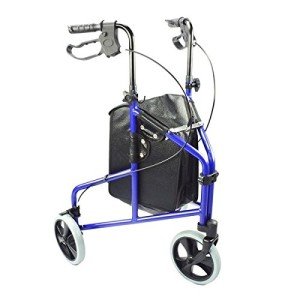Blog entry by Ute Dreher

The Modern Walker: Revolutionizing Mobility for All
In the pursuit of flexibility and ease, the modern walker has progressed from a basic mobility aid into a sophisticated gadget designed to boost the lifestyle for people with minimal mobility. Whether due to age, injury, or impairment, the requirement for efficient mobility options is universal. This article will dig into the characteristics, benefits, developments, and factors to consider surrounding modern walkers, together with a frequently asked questions (FAQ) area to answer typical queries.
Advancement of Walkers
Conventional Walkers
Conventional walkers, frequently constructed from aluminum or steel, normally feature a rectangle-shaped frame with 4 legs and no wheels. These basic models provide stability however can be troublesome, requiring users to lift the gadget instead of press it. As an outcome, their use typically puts unnecessary stress on the upper body and minimizes mobility effectiveness.
The Transition to Modern Walkers
In the past few years, the design and functionality of walkers have actually changed significantly. Modern walkers typically consist of features such as:
- Wheels: Many brand-new models now include wheels on the front legs, enabling users to push instead of raise the gadget.
- Seats: Some walkers come geared up with a seated location, offering users with a location to rest when needed.
- Adjustable Heights: Height-adjustable options make it possible for individualized fit, dealing with specific user needs.
- Ergonomic Grips: Improved grip styles improve convenience and support, minimizing stress on hands and wrists.
This evolutionary shift not only supports better mobility however also increases confidence, self-reliance, and safety for users.
Benefits of Modern Walkers
Modern walkers feature a selection of advantages for people seeking support in mobility. These benefits go beyond simple physical assistance, contributing favorably to mental and emotional health as well.
Increased Mobility and Independence
Modern walkers empower users to navigate their environment more freely. Features such as wheels and lightweight designs assist in ease of movement, enabling users to maintain autonomy in day-to-day activities.
Enhanced Safety
The incorporation of safety functions in modern walkers plays an essential function in avoiding falls and injuries. Anti-slip grips and bigger bases of assistance add to stability, thus reassuring users about their safety while walking.
Multi-functionality
Many modern walkers provide multifunctional designs, working as both a mobility aid and a storage solution. With features like integrated bags and trays, users can carry essentials and individual items, making outings with these walkers more hassle-free.
Mental and Emotional Well-being
Improved mobility can significantly affect a person's psychological health. Less reliance on caretakers and the capability to engage in social interactions can foster a sense of belonging and improved morale.
Functions to Consider When Choosing a Modern Walker
When picking a modern walker, various features ought to be considered to guarantee it meets the user's requirements efficiently. Here, we provide a list of essential factors to consider:
- Weight and Material: Opt for lightweight materials that still offer durability and stability.
- Wheels: Decide in between walkers with front wheels or fixed legs based upon the user's level of mobility.
- Seat Availability: For those who need rest breaks, pick a Outdoor Walker with an integrated seat.
- Storage Options: Look for styles that include storage bags or trays for bring day-to-day basics.
- Height Adjustability: Ensure the walker is height-adjustable to promote proper posture and Best Rollator Walker comfort.
- Foldability: A foldable walker can provide ease in transportation and storage.
Typical Types of Modern Walkers
The market today uses a range of walker types customized to various needs. Below are some typical choices:
- Standard Walkers: Basic models without wheels, ideal for users who need substantial stability.
- Rolling Walkers (Rollators): Feature wheels on all 4 legs and typically include seats, accommodating those looking for mobility and resting chances.
- Upright Walkers: Designed for users aiming to maintain much better posture while walking. These gadgets motivate an upright position, easing pressure on the back.
- Transportation Walkers: Lightweight and Compact Rollator; generally created for short distances and quicker mobility for caretakers.
| Walker Type | Secret Features | Best For |
|---|---|---|
| Standard Walker | NRS Freestyle Ultra Lightweight 3-Wheel Rollator - Easy Mobility, no wheels | Optimum stability |
| Rolling Walker | 4 wheels, often a seat | Increased mobility |
| Upright Walker | Promotes upright posture | Pain in the back reduction |
| Transportation Walker | Compact and lightweight | Caregivers and brief ranges |
Frequently Asked Questions About Modern Walkers
What is the very best type of walker for seniors?
The best walker for seniors largely depends upon their physical condition and mobility levels. Numerous choose rolling walkers due to their ease of use, while those with higher stability needs might benefit from basic walkers.
How do I ensure an appropriate fit for my walker?
To ensure a correct fit, Rollator For Tall People stand inside the walker with your arms hanging comfortably at your sides. Your elbows must be a little bent when holding the walker deals with. Adjust the height till it aligns completely.
Can walkers quickly be transferred?
Yes, numerous modern walkers are designed to fold for easy transport. Designs such as transportation walkers are especially lightweight and compact, making them appropriate for travel.
Are walkers covered by insurance?
Lots of insurance coverage plans, including Medicare and Medicaid, might cover the cost of walkers when recommended by a health care provider. It is advised to verify coverage information with your insurance coverage company.
How can I keep my modern walker?
Routine checks must be carried out for any loose screws, frame stability, and wheel performance. Clean the walker occasionally to keep hygiene and curb wear.
The modern walker represents a considerable improvement in mobility aids, boosting the self-reliance and self-confidence of users. With various types, features, and factors to consider available, selecting the right walker can vastly enhance mobility and overall quality of life. Comprehending these tools empowers users, caregivers, and health care professionals alike to promote a supportive, active community for those needing assistance in mobility. The modern walker is not simply a gadget; it is a bridge to flexibility and independence.

